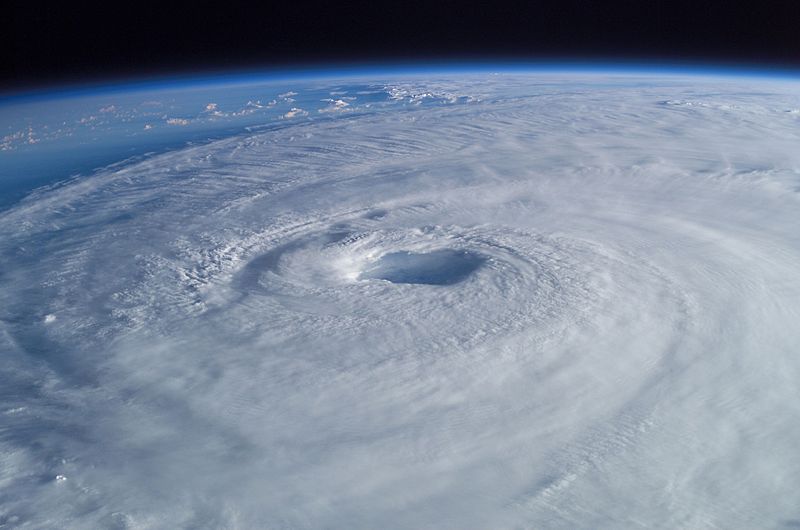Physicist: This question has had a lot of forms, from questions about hot air balloons, to “just hovering in the air”, to weather. But the common thread boils down to “what keeps the atmosphere moving with the surface of the Earth?”.
The short answer is “the ground has drag”, and the slightly longer answer is “sometimes it doesn’t completely”.
First, it’s useful to know what the atmosphere is like (as if you haven’t been breathing it practically all day). It’s a little surprising how much air there isn’t. Although you’ll hear about the atmosphere extending to a hundred miles or more above our heads, it becomes so thin, so fast, that almost none of that “counts”. If all of the atmosphere were as dense as it is at sea level, then it would only be about 7 km tall. People in eight countries could literally walk to space!

Left: the atmosphere (out to 100 km) compared to the Earth. Right: if our atmosphere wasn’t so fluffy and was instead only 7.3 km thick..
The point is that the atmosphere, rather than being a heavenly swath of lung-food, is a tiny puddle of gas, thinly painted on the surface of our world. The Earth for its part is covered in bumps and wrinkles, like mountains, valleys, tress, and whatnot.

The stuff on the surface of the Earth pushes on the wind exactly as hard as the wind pushes on it. So, overall, the air moves with the ground.
These “bumps” catch the atmosphere and keep it moving with the surface. Even if a stationary, non-rotating atmosphere were to suddenly replace ours, it would find itself moving with the rest of the Earth in short order (after the worst storm ever, by far). In physics (reality) there’s no difference between moving and not moving, so a stationary fan is just as good at stopping moving air, as a moving fan is at moving stationary air. Once air is moving with the Earth it’s got momentum, and that’s what keeps it moving (or “what keeps it still”, if you happen to live on Earth).
It turns out that the overwhelming majority of the movement of the atmosphere is tied up in rotating with (and so sitting still relative to) the Earth. The highest wind speed ever verified was 253 mph (that’s gust speed) as measured at Barrow Island. That immediately sounds less impressive when you consider that the wind was measured relative to Barrow Island, which at the time was traveling east at about 940 mph. Still is.
That all said, if you go high enough you find that the surface of the world starts to look pretty smooth. Mountains and seas and whatnot all start to look like the same, fairly smooth surface. As a result, high altitude winds take the turning of the Earth as more of a strong suggestion than as a rule, the way air near the surface does (20 mph gusts! Howsoever shall my hat stay on?). High altitude winds routinely blow at well over 100 mph.
Speaking of which, wind is powered mostly by convection: one region of the world gets warmer, a bubble of hot air rises, nearby air rushes in to take its place, that sort of thing. Wind isn’t caused by the rotation of the Earth, but it is affected by it.
Everything in space wants to travel in a straight line, so when air from sunny Barrow Island (traveling east at 940 mph) drifts south to also-sunny Perth (traveling east at a mere 850 mph), it finds itself traveling east 90 mph faster than the ground. Usually the difference in eastward speed between two points on the globe gets broken down by the ground, by the time the air has breezed from one to the other. When that east-speed-difference doesn’t get broken down, usually because the air covered the distance too fast, you get a big swirl of air. But keep in mind, ultimately the wind doesn’t get its energy from the Earth, it gets it from heat, which mostly comes from the Sun (“mostly” because warm water and dirt does a lot).








9 Responses to Q: Why doesn’t the air “sit still” while the Earth turns under it?